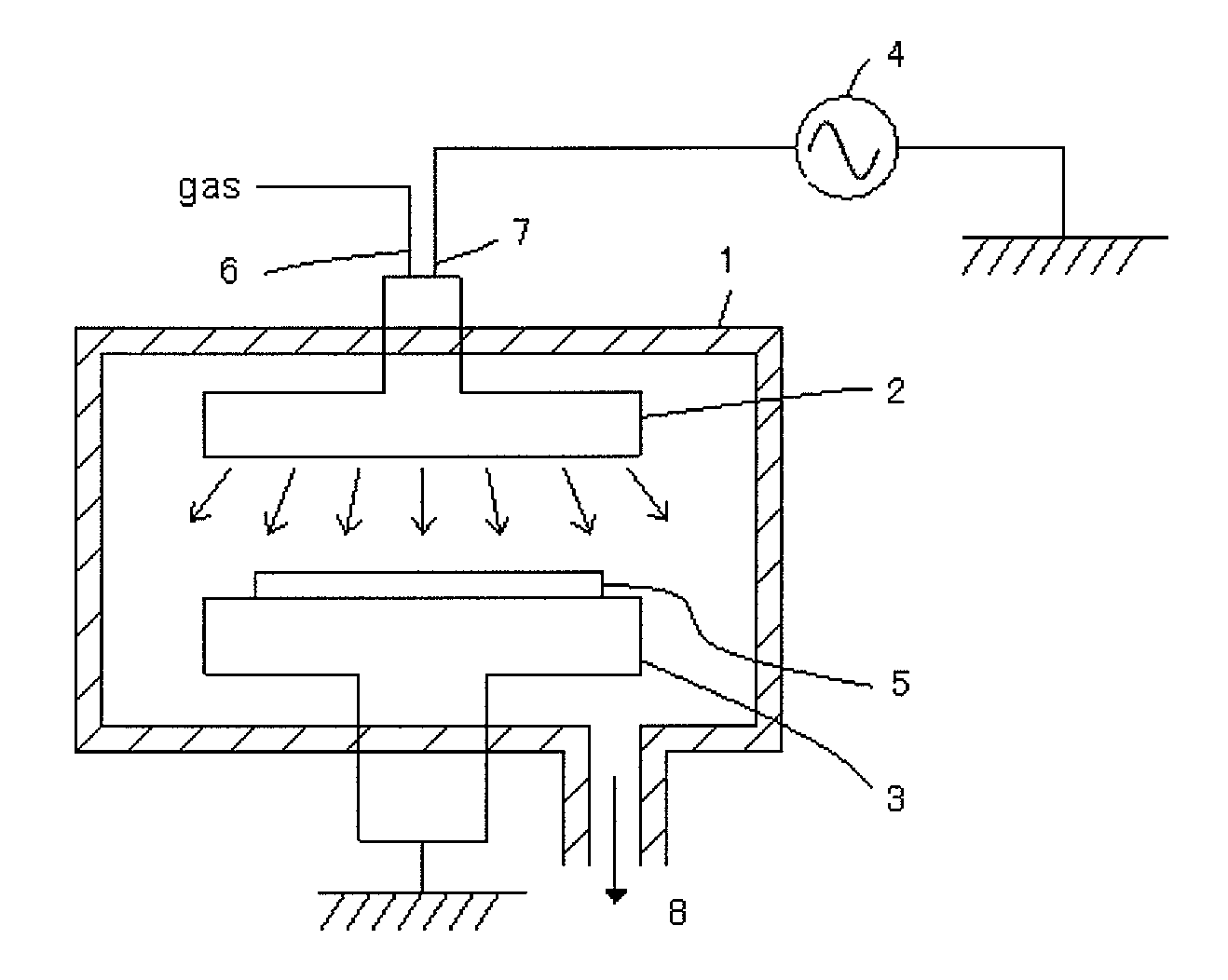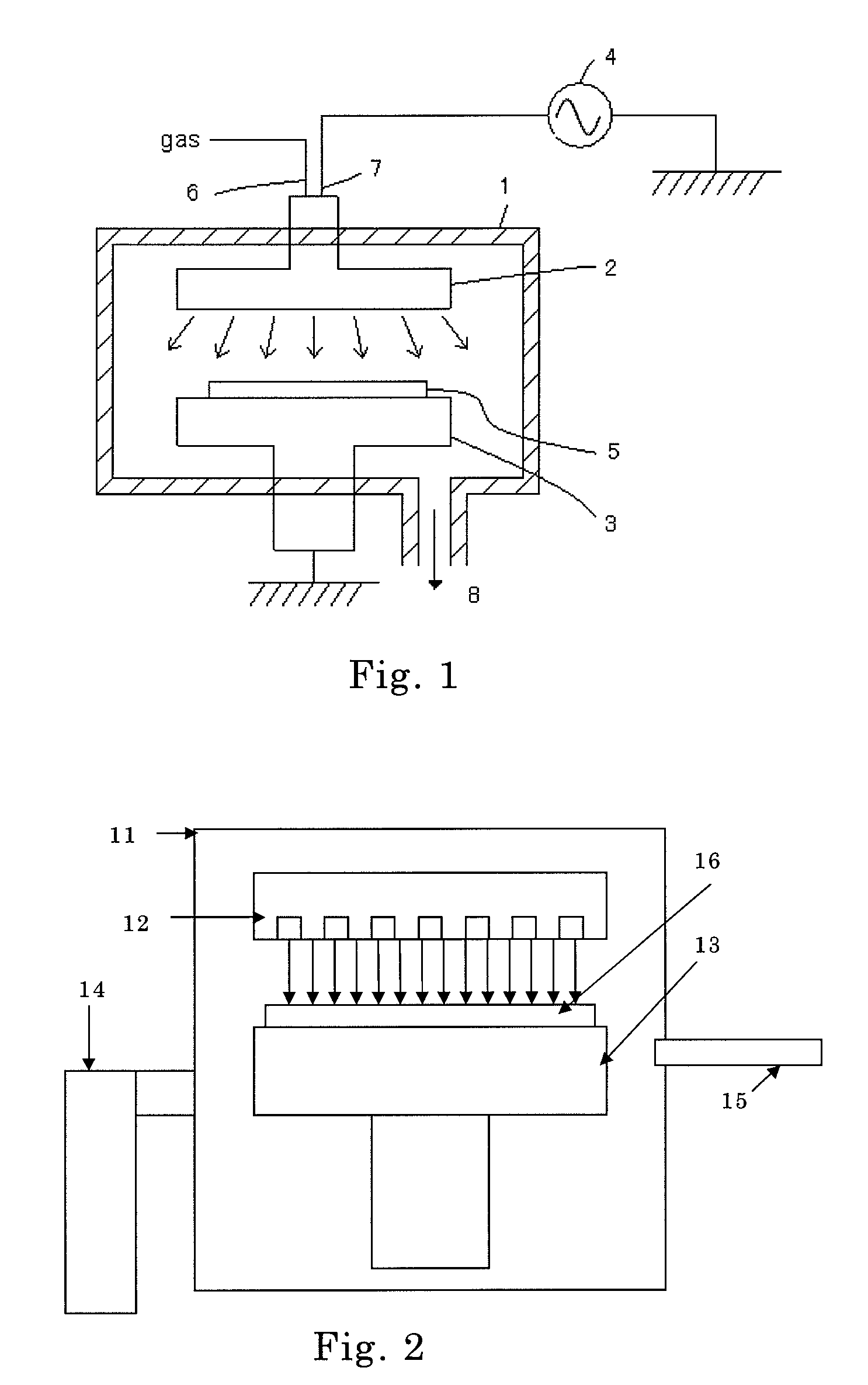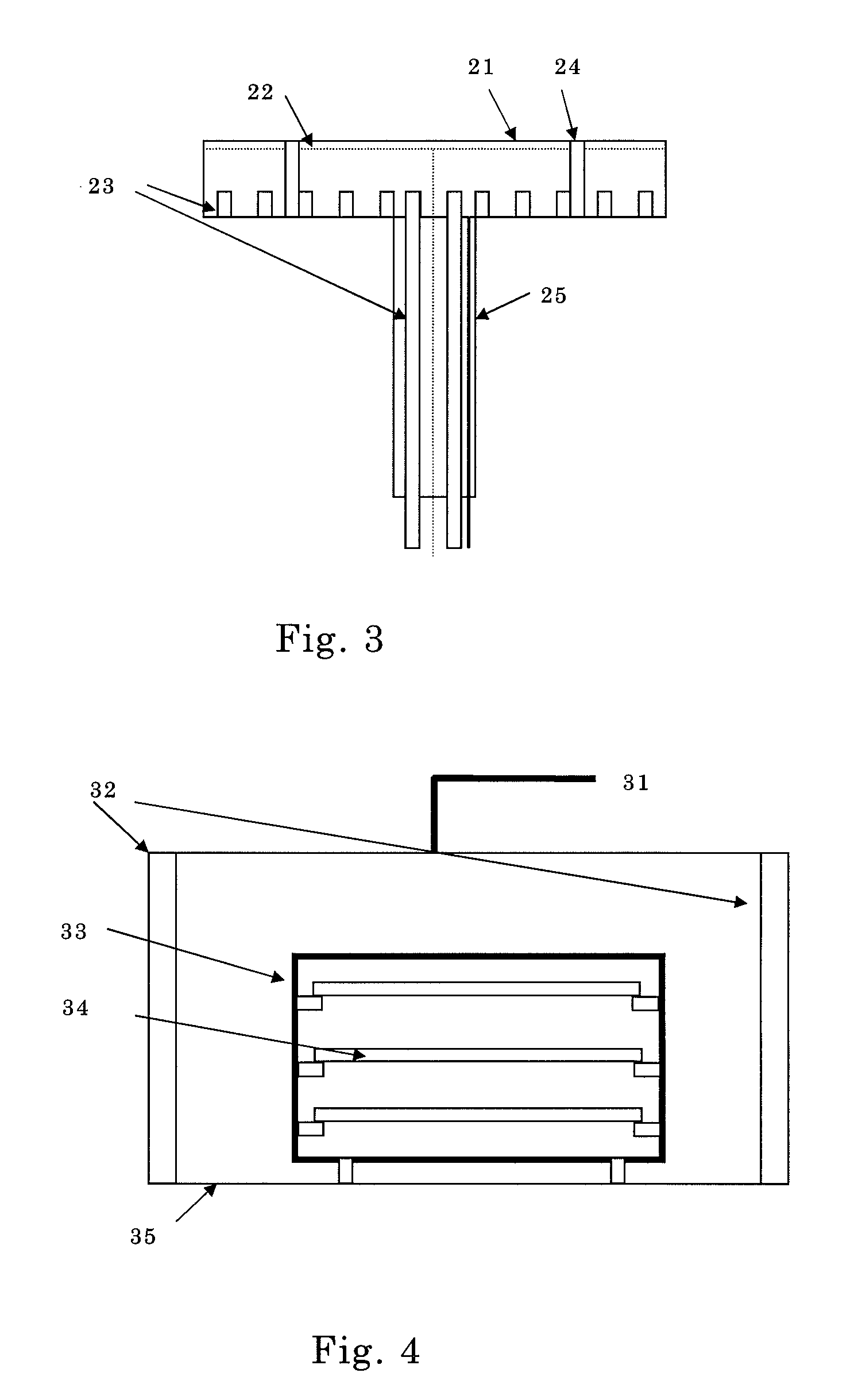Method for forming inorganic silazane-based dielectric film
a dielectric film and inorganic silazane technology, applied in the field of silazane-containing dielectric film, can solve the problems of increasing the tendency of the film to become sparse in the embedded area, peeling or breaking, and increasing the tendency of the film to become spars
- Summary
- Abstract
- Description
- Claims
- Application Information
AI Technical Summary
Benefits of technology
Problems solved by technology
Method used
Image
Examples
example
[0091]Experiments were conducted as described below. The results are indicated in tables below. In these experiments, a plasma CVD device shown in FIG. 1 and FIG. 3 was used as an experimental device.
[0092]The diameter of a substrate was 200 mm. The thickness of each insulation film was set at 500 nm.
[0093]An insulation film was formed on and filled in an irregular surface of SiN formed on a Si wafer including a hole having a width of 60 nm and a depth of 600 nm. Annealing was conducted in a UV irradiation apparatus shown in FIG. 2 or in a furnace chamber shown in FIG. 4 made of a quartz tube provided with a quartz boat capable of performing annealing at a vacuum pressure to atmospheric pressure.
[0094]Film Formation
Conventional Example
[0095]A low-k film (siloxane film) was formed on a substrate under the conditions shown in Table 1 below.
[0096]
TABLE 1Conventional FormationConventional FormationTriethoxysilane (sccm)10Hexane (sccm)150O2 (sccm)500He (sccm)630Pressure (Pa)266RF (13.56 ...
examples 1-4
[0097]In each example, an inorganic silazane bulk film was first formed on a substrate under the conditions shown in Table 2 below, and then the bulk film was treated with CxHy gas under the conditions shown in Table 3.
[0098]
TABLE 2Silazane Bulk FormationEx. 1Ex. 2Ex. 3Ex. 4SiH4 (sccm)1010050100NH3 (sccm)50255025Ar (sccm)1000100010001000Pressure (Pa)266266266266RF (13.56 MHz) (W)100100100100Susceptor Temp. (° C.)0000Gap (mm)24242424Time (second)60756475
[0099]
TABLE 3CxHy TreatmentEx. 1Ex. 2Ex. 3Ex. 4Hexane (sccm)150150150150Ar (sccm)630630630630Pressure (Pa)2662662661000RF (13.56 MHz) (W)200200200200Susceptor Temp. (° C.)0000Gap (mm)24242424Time (second)95959525
examples 5-8
[0100]In each example, an inorganic silazane bulk film was formed on a substrate with CxHy gas under the conditions shown in Table 4 below.
[0101]
TABLE 4Liquid Layer Formation by SiH4 + NH3 + CxHyEx. 5Ex. 6Ex. 7Ex. 8SiH4 (sccm)1010050100NH3 (sccm)50255025CxHy (sccm)HexaneHexaneHexaneMesitlyene200200200150Ar (sccm)1000100010001000Pressure (Pa)266266266266RF (13.56 MHz) (W)100100100100Susceptor Temp. (° C.)0000Gap (mm)24242424Time (second)55715849
[0102]Heat-Treatment (Post Film Formation)
[0103]Heat-treatment was performed to each film formed on the substrate under the conditions shown in Table 5 below.
[0104]
TABLE 5Post Formation TreatmentSubstrateTemp.DurationIntroducedGas flowPressureCuring type(° C.)(min)gas(sccm)(Pa)Comp.Thermal80060N21000AtmosphericannealingEx. 1↓↓↓O21000↓Ex. 2↓↓↓↓↓↓Ex. 3↓↓↓↓↓↓Ex. 4UV curing40030↓↓1000Ex. 5Thermal80060↓↓AtmosphericannealingEx. 6↓↓↓↓↓↓Ex. 7↓↓↓↓↓↓Ex. 8↓↓↓↓↓↓
[0105]Film Characteristics
[0106]Each thus-obtained film was evaluated and the results are show...
PUM
| Property | Measurement | Unit |
|---|---|---|
| temperature | aaaaa | aaaaa |
| temperature | aaaaa | aaaaa |
| temperature | aaaaa | aaaaa |
Abstract
Description
Claims
Application Information
 Login to View More
Login to View More - R&D
- Intellectual Property
- Life Sciences
- Materials
- Tech Scout
- Unparalleled Data Quality
- Higher Quality Content
- 60% Fewer Hallucinations
Browse by: Latest US Patents, China's latest patents, Technical Efficacy Thesaurus, Application Domain, Technology Topic, Popular Technical Reports.
© 2025 PatSnap. All rights reserved.Legal|Privacy policy|Modern Slavery Act Transparency Statement|Sitemap|About US| Contact US: help@patsnap.com



